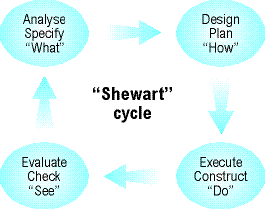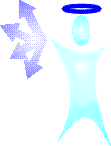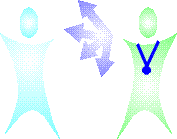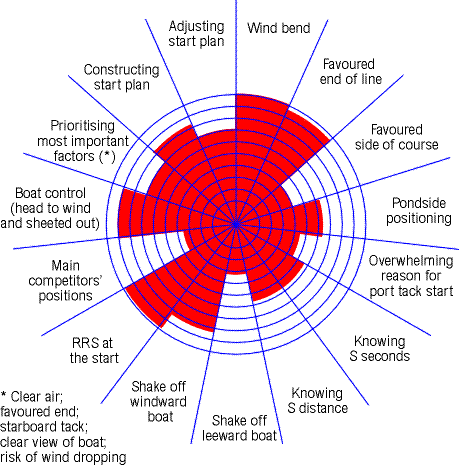|
In my current and previous jobs, I've mainly been involved in the development
of systems which teach (Instructional Systems) or which process data (Computer
Systems). I've co-authored a very modest text for post-school students on some
principles of Information Technology, while I have a more ambitious project for
the next year, a text on the Principles of Instructional Systems Engineering.
The point of this? It turns out that Computer Systems Engineering and
Instructional Systems Engineering have many points of contact with performance
improvement, so I'm developing a method of performance improvement which I feel
I can follow with confidence. Two issues are clear so far.

Shewart cycle
Shewart showed that any rational process involves four steps.
- Figuring out what needs to be done: analysing or specifying the
requirements or needs, otherwise known as determining "what" has
to be done.
- Figuring out how to do it: designing or planning the ways in which you are
going to achieve what has to be done, otherwise known as determining
"how" to do it.
- Doing it.
- Figuring out the lessons to be learned from what you've just done:
evaluating and checking the outcomes, otherwise known as "seeing"
how it worked.
The cycle is illustrated here. I've put Shewart's name in quotes, because
this isn't actually his cycle. He outlined something a little different, but I'm
sure he'd be more than happy with my adaptations...
So, to apply these ideas to improving performance, we now know that we must:
- Analyse the required performance.
- Plan how to improve it.
- Do it.
- Evaluate the outcome and start on the next cycle of "What" --
"How" -- "Do" -- "Check".
The coach

When you think about how you did, you almost always focus on external issues.
After all, you certainly did the best you could (you always do the best
you could, don't you?) so it must have been the wind, the water, the boat, the
tune, the other competitors, the Race Committee, the rain, the heat, ... It is
human nature to reflect upon our performance and find others lacking.
When you ask someone else about your performance, their reply is much more
likely to focus on your faults and deficiencies, and not those of others. On the
one hand, they don't have access to what you "know", and can only make
their judgements on what they see. On the other hand, they may well
"see" things a little more clearly than you. Of course, what passes
for the "truth" is in both points of view.

The significance of this observation, of course, is that you must have both
points of view if you want to improve.
To apply this idea to improving performance means we now know you need a
coach.
Performance profile
To get the ball rolling, I've prepared a first draft performance analysis to
improve my sailing, and have considered what makes a good start. The analysis
focuses on performance, and so tries to specify what skills are needed to
achieve a good start. Of course, excellent performance includes both having and
applying the necessary knowledge. So, these are the requirements as I see them:
- Knowing how the wind bends, if at all, at the windward mark.
- Deciding which side of the course is favoured.
- Knowing which end of the starting line is favoured.
- Positioning yourself on the pondside to get and keep a good, continuously
clear view of your boat through the whole of the starting sequence.
- Deciding on which is most and least important in the current
circumstances: starting with clear air; at the favoured end of the line; on
starboard tack; or with a clear view of the boat.
- If you can't keep a good, continuously clear view of your boat through the
starting sequence, adjusting your tactics appropriately.
- If not starting on starboard tack, having a bloody good reason to start on
port.
- Being able to drift your boat very slowly towards the line while almost
head to wind and sheeted out.
- Knowing how long it takes your boat to hit top speed in the current
conditions (call this S seconds).
- Knowing what sort of distance your boat covers in S seconds when
close-hauled from being sheeted out and drifting in the current conditions.
- Knowing how close to keep to the line in the last minute in case the wind
drops.
- Being able to shake off a leeward boat from forcing you over early.
- Being able to shake off a windward boat from taking your air.
- Knowing where your three or four main competitors are during the start.
- Knowing what parts of the racing rules of sailing apply at the start.
- Being able to construct a personal "start plan" from these
factors, or the most important of them.
That is quite a scary list. Having analysed the factors that make for a good
start, the next step is to prepare a performance improvement plan. The idea here
is to profile your current performance, skills, and knowledge, and decide where
to seek improvements. Here is how I rate myself.

The profile shows where I need to improve. So the plan is to practice:
- Dealing with the leeward boat that comes up underneath during the
pre-start
- Being clear when a port-tack start is desirable
- Knowing where the main competitors are
- Deciding upon the favoured side of the course, given wind bend and
favoured end of line
- Judging boat speed and distance covered during the count-down
Simple, really...
2005-12-18 |
